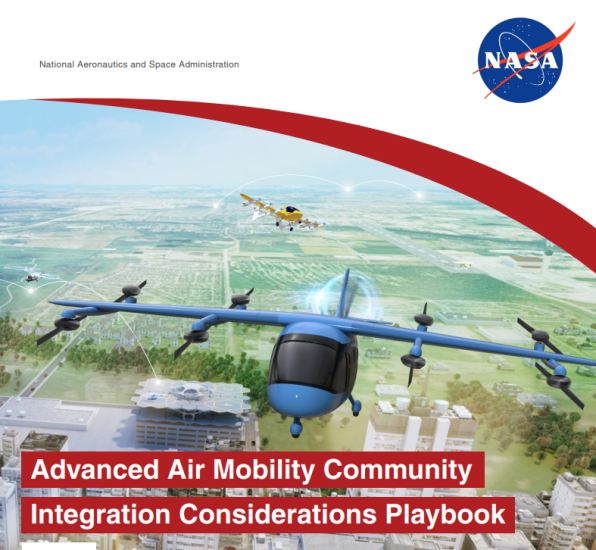NASA has released its Advanced Air Mobility (AAM) Community Integration Considerations Playbook, an overview of considerations relevant to local and regional AAM planning activities. It is designed to serve as a practical resource that can help provide initial information to inform local, regional, state, and tribal planning for AAM and is expected to evolve with the industry.
The playbook was compiled and created over a series of five workshops in partnership with five community-led teams responding to NASA’s announcement of the opportunity to partner on community and integration planning for AAM in February 2021.
The 28-page document states AAM is a broad concept focusing on leveraging these trends to include routine aviation mobility in urban, suburban, and rural communities. NASA believes it has the potential to provide consumers and public service providers additional local and regional mobility choices that offer the potential for improvements, such as cost and time savings, greater equity, and increased sustainability. AAM has the potential to also offer flexibility for civic and transportation planners as AAM networks are tailorable to a community’s needs, require less acreage than road and highway networks, and offer more flexibility to adapt over time.
AAM includes moving light, time-critical packages by small uncrewed air systems – informally known as “drones.” These packages could include medical supplies to isolated areas or sensors to inspect pipelines or rail tracks. AAM also includes the movement of people and cargo within communities, whether this is transporting rural patients to the hospital, passengers to the airport, or packages to a central distribution point where they could be delivered with the mail in electric vehicles. AAM includes regional travel too short or lacking demand for existing air travel, but too long for an easy ground trip. AAM is made possible through integrated and connected multimodal infrastructure and data networks. Infrastructure networks will include existing transportation structures such as roads, airports, and train and bus stations and new AAM infrastructure such as vertiports. Data networks include new equipment, such as navigational aids, connections, such as satellite frequencies, and data such as, local weather observations.
Read the document here
For more information visit:




